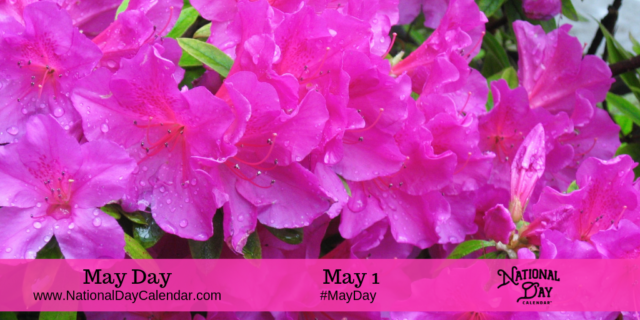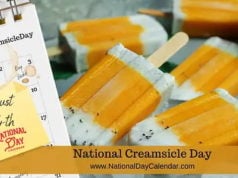
May Day is observed annually on May 1. In many ancient calendars, May 1 was the first day of summer. This was a cause for celebration.
- One of the more popular rituals was harvesting flowers and giving them to neighbors and strangers in cone-shaped baskets. These “May Baskets” become more commonly known as “May Day Baskets”.
- The current tradition is observed by hanging a cone-shaped basket full of flowers or other gifts on the outside doorknob, then knocking or ringing the doorbell and run away.
- May Day has been a traditional day of celebration for centuries, with some of the earliest appearing in pre-Christian times. In English tradition, May Day is celebrated by crowning a May Queen and dancing around a maypole.
- The Finnish tradition is a carnival-type celebration in the streets that includes a special type of lemonade that is made with lemons, brown sugar and yeast.
- In France, it is correct to give people either dogwood or lily of the valley to celebrate May Day.
- In Italy, a seasonal feast is held to celebrate the arrival of spring.
- In Hawaii, May Day is Lei Day. Lei day started in 1929 and continued today. It is Hawaiian culture that starts on May 1st and continues throughout the day. Each island has a different type of celebration, but the aim is the same – to celebrate the onset of spring. People immerse themselves in the centuries-old tradition of presenting flower necklaces to say “Aloha” at the Lei Day celebration. Here, May Day is Lei Day where every person can enjoy lei-making contests, hula dancing, and Hawaiian music.
- Maypole Dance: The medieval tradition is the one which is probably best known to everybody. Maypole is a tall pole around which dancers perform a beautiful dance with ribbons.
- The Catholic Church banned the practice in the 1600s because they believed the dance had impure and sexual connotations. The dance is still practiced throughout Europe to this day.
- Fertility: May Day has been celebrated by many cultures over many centuries. Gods of the forest, goddesses of passion and motherhood, and a number of agricultural deities are connected to this holiday. It is also the sabbath of fertility.
- In Ancient Greece they celebrated the Festival of Chloris. She was the goddess of flowers and spring. The Ancient Romans had a similar festival in honor of the goddess Flora.
- Morris Dancers in England wear hats decorated with flowers, suspenders, and ankle bells. They stomp their feet, wave handkerchiefs, and bang sticks together when they dance.
- One traditional May Day dance in England is called the Cumberland Square.
- A Maypole stands all year long in Inkwell, England. It has been there since 1894.
- Maypoles were sometimes made from old ship’s masts.
- May Day also celebrates International Workers’ Day and the decision to limit a workday to 8 hours. In the 19th century, American laborers fought for this right and, although America celebrates Labor Day in September, many countries still celebrate the holiday on May 1.
- Shouting “mayday” is most commonly known as the international distress signal and actually has no association with May Day or May 1. The phrase means “come help me” and derives from the French.
- Tradition dictates that the morning dew on May 1 holds magical properties. Folklore says that rubbing the dew on your face can “remove spots, freckles and pimples,” the Guardian reports. The traditional rhyme of the day is that if a maid rises early, collects dew, “[a]nd washes in dew from the hawthorn tree, / Will ever after handsome be.”
Sources:












